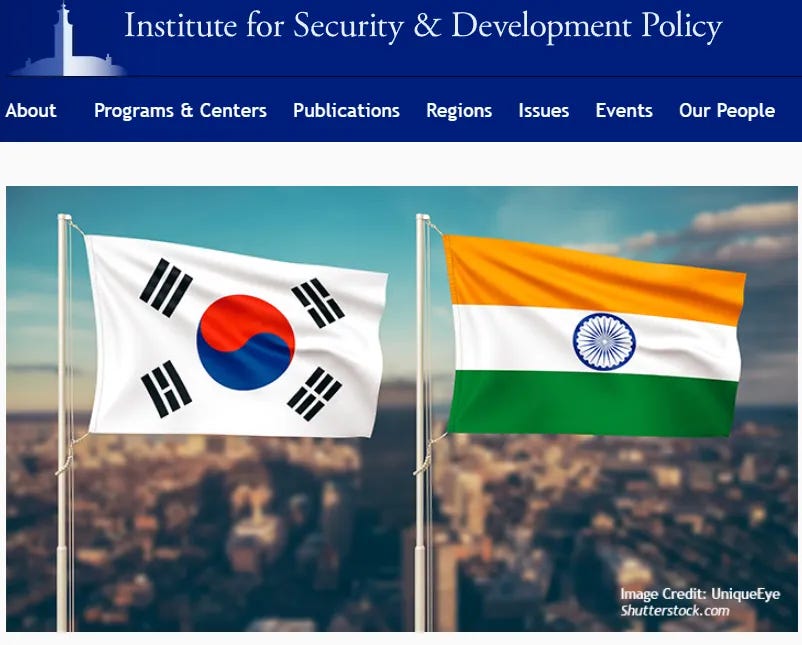Korea - India bilateral relations
South Korea needs to build domestic constituency to the long term India-Korea bilateral relationship
The Yoon Administration presents its foreign policy through a rhetorical frame. Its two guiding strategic documents, the Strategy for a Free, Peaceful, and Prosperous Indo-Pacific Region and the National Security Strategy: Global Pivotal State for Freedom, Peace and Prosperity are awash with the key terms of freedom, democracy, and human rights - all encapsulated around a single catchphrase, the “Global Pivotal State”.
Commentators are always quick to jump on the bandwagon. The catchphrase supports op-eds, a growing number of thinktank reports, and some (very important) conferences that keep everyone busy. Some have quite rightly been more circumspect. For policymakers and diplomats, seeing through this rhetorical frame is important - this is particularly true in the context of building bilateral relations.
The pivot as a rhetorical frame
Language is critical to diplomacy. In Greek mythology, Hermes was not only associated with diplomacy, but also language, persuasion, and trickery. Lang…



